Bill Kelliher – The Mastodon Guitarist Riffs on Helix and Heaviness (and bestows a free preset)
by Barry Cleveland
Mastodon were embraced by press and public alike following the release of their debut album, Remission, in 2002—and the 2004 follow-up, Leviathan, garnered even greater critical acclaim. The quartet’s eclectic sound—primarily powered by guitarists Brent Hinds and Bill Kelliher—welded elements of thrash, hardcore, psychedelia, and progressive rock onto a solid frame of traditional metal, forging a potent amalgam with cross-genre appeal. The band’s sound has shifted in various ways since then, but remains riff-based and guitar driven. A new record, produced by David Bottrill (Muse, Tool, King Crimson) is slated for release later this year.
Kelliher began experimenting with amp and effect modelers more than a decade ago, finally settling on Helix Floor. “Although the other modelers I’ve used also sounded great, I found Helix to be much easier to navigate than the others,” he says. “Helix provided instant gratification right from the start.”
The guitarist was gracious enough to provide a free Helix preset for readers of Model Citizens.
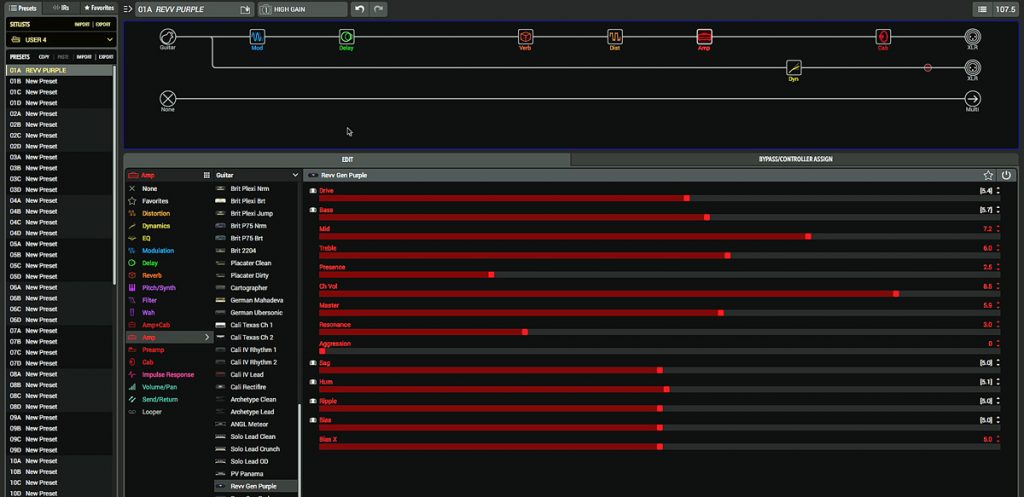
What is the most fundamental thing you look for in an amp modeler?
I need to feel an immediate response or hit when I strike the guitar strings. Even with real amps, I don’t like it when I hit a string and there’s a slight delay, followed by a soft or muddy sound. I want to really feel what I play instantaneously. At the same time, it isn’t like it was back in the day when I first began recording, and I only had one amp and one pedal, and they were what I used to get all the sounds on a record. Nowadays, I might use a several different amps, or amp models, on a single song, just to create a little variation in the tone, and they may have slightly different feels and responses.
When you’re searching for the right tone, do you begin by hearing something specific in your head, and then adjust the controls until you dial it in, or do you begin by playing around with the controls, just to see what you can come up with?
I do both. On certain songs I might try to come up with, say, five tones that I know I want to use. Number one is usually my old-school heavy rhythm sound that I always use when playing rhythm parts. I’ll use that, like, 75 percent of the time. And then I’ll typically have a clean sound with no effects. Then, that clean sound, but with some effect or effects, like a heavy tremolo or Leslie speaker effect. I also like heavy tones with certain types of delay, and less-distorted, sort of Pink Floyd-type delayed tones.
The time I’m most likely just to sit and play with the amp controls to see what I can come up with is when I’m working on demos in my home studio. With Helix, it is just so easy to go from preset to preset playing the same riff, which can be really inspiring because there will usually be things that I’ll take away from it. Like, “Oh I hear a cool effect that I want to borrow.” And I’ll also do that within my own presets that I’ve created. I might start adding octaves up or down, or octaves plus pitch-shifted notes, and then a simple riff might sound even cooler. Or sometimes I’ll have a complex riff with a lot of notes and discover that it sounds much better when I play fewer notes but add the pitch-shifter. That can be very inspiring and sometimes acts as a little confidence booster when writing riffs.
Talk about the preset you are making available here as a free download.
The preset is called REVV PURPLE because it is based on the Revv Gen Purple amp model. My favorite amp models are the Placater Clean and Placater Dirty, because they are based on the Friedman BE-100, but I also really like the Revv Gen Red and Revv Gen Purple amps.
When creating this preset, I loaded the amp first, with the Drive at 5.4. Then, like with almost all of my presets, I put the Scream 808 overdrive in front of it, with the Gain set to 0, and that tightened it up a lot. Without the 808, the sound is what might be called rounder, and I like more of a square sound. Like I said before, when I hit a string I want to hear the sound right away, I don’t want that rounder, softer response. Then for the cab, there’s a 4×12 Greenback 25 with a 57 Dynamic microphone at 1.0 distance. Sometimes I’ll use the 421 Dynamic in my presets, but I mostly use the 57, set as close as it can be. And there’s a noise gate at the end of the signal chain.
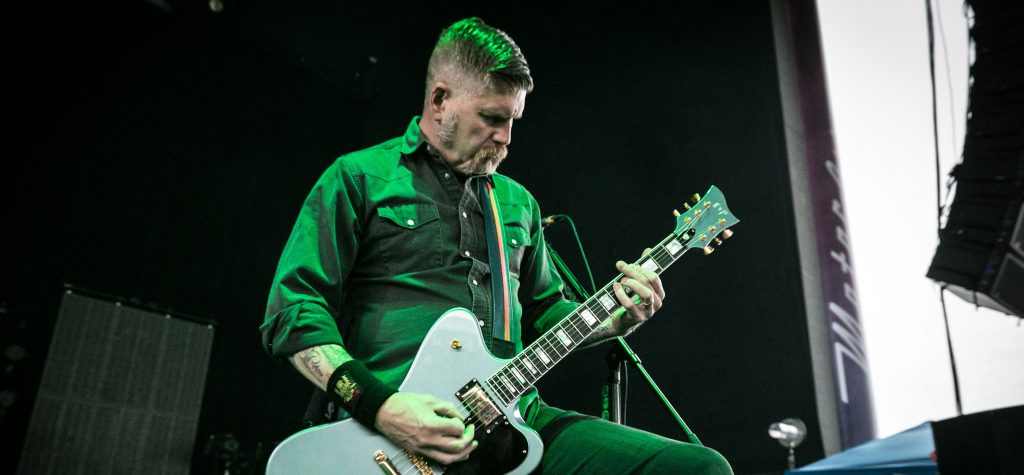
There are also several effects.
The Optical Trem is one of my favorite Helix effects, so that’s in there, set to a pretty slow speed. And there’s also a ’63 Spring, spring reverb, in the signal path ahead of the 808 and the amp. Another of my favorite Helix effects is the Reverse Delay, which I have after the tremolo, set at a 50% wet/dry mix.
Have you ever tried running the Reverse Delay at 100% wet to get backwards tape effects?
No, I’ll have to try that. I’m a big fan of backwards tape sounds.
How have you been using this preset?
We’re working on a new Mastodon album right now, and I’ve been using it to add bits of color to layered guitar parts while recording in my home studio. The way the preset works is that the signal splits immediately after the input and a dry signal goes to the right XLR output. That’s the direct DI output. I record the processed Helix sound using the left XLR output and the unprocessed DI signal from the right. That way, when I go to the big studio, if I like the part but want a different tone, I can re-amp it using an actual amp or even a different Helix preset, though that doesn’t happen very often, because the original sound usually works.
So your processed signal path is mono?
Within Helix, yeah, it’s all mono. Because there are two guitar players in our band, and in the end the guitars will be panned left and right in stereo mixes.
“It’s not the gain from your pickups or pedals or your amp that makes your riff heavy—it’s the riff. The riff has got to be heavy.”
Do you ever patch external pedals or other processors into the Helix signal chain using the effects sends and returns?
Yeah, I do that a lot. I have so many different setups because I have so much gear! One example would be inserting Synergy modules into one of the effects loops and the using MIDI to switch between the preamps. And I’ve also used the sends as alternative outputs for setups that involve more complex routing. Honestly, though, when I’ve used 5-Cable Method and 7-Cable Method with multiple amps, I didn’t really feel like my reverbs and other time-based effects sounded better after the amp. A lot of people will probably disagree with me, but I think those effects sound more realistic when they are in front of the amp.
What about internal signal routing. Do you ever use more than one or two of the four signal paths?
I mostly try to keep things rather simple internally, so most of my presets just use two signal paths in terms of processing—though as I was saying, there can be multiple splits where the signal is routed to various outputs, for feeding things like real amps, power amps, and front-of-house mixers. For example, when I’m performing onstage I might be hearing both the sound of Helix going through a power amp and the sound of it going through a real amp like my Friedman, plus the foldback from the P.A. monitors. At one point there was a phase problem due to blending the miked cab signal with the direct signal in the P.A., but we worked out a solution for that.
Do you also use Helix plus multiple amps when recording in major studios?
No. Right now I’m mostly just going into real amps, and using pedals to try to recreate all the effects I get in Helix. That’s because of the latency inherent in all modelers, which some producers have a problem with when that signal is blended with multiple miked-up amps.
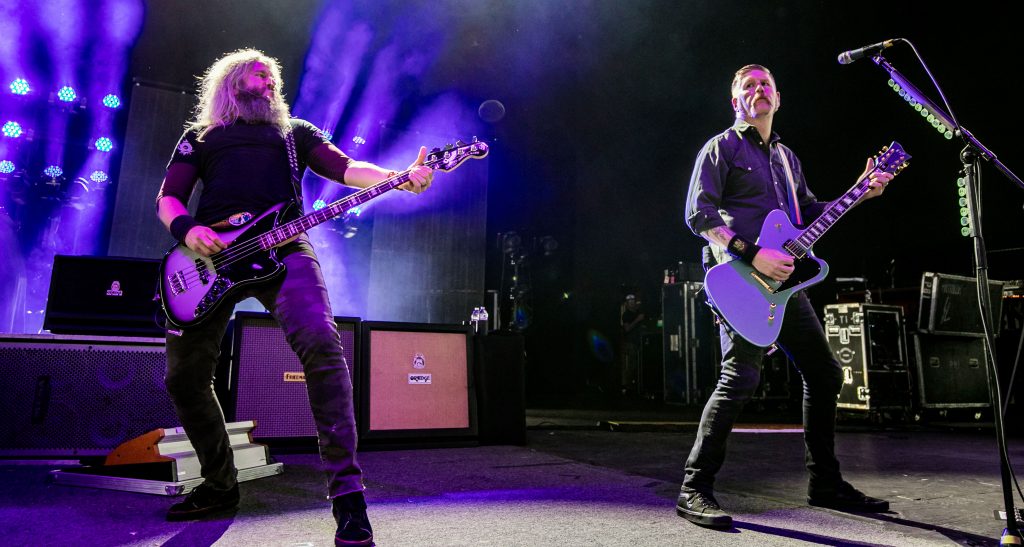
How much of getting a heavy sound has to do with playing techniques like down strokes, palm mutes, and pick attack, as opposed to amp or pedal settings?
When I first started playing guitar, I was very much a downstroke player because I grew up learning how to play songs by watching and listening to my favorite bands, like the Ramones, punk-rock style. I never took any lessons. And there’s a percussive feel to that because you’re hitting the low string first and you’re hearing the same chord played over and over because repetition is what punk and heavy rock are all about. It’s obviously a very different approach and sound than, say, strumming. And that has a lot to do with the sound of what’s coming out of the amp.
Later in my career I learned about alternate picking and double picking. I learned by playing along with people, and some of those people were playing really fast. When I asked them how they did it, they showed me how to use down/up/down strokes, so I learned to do that. But when it comes to playing the classics, it’s a down-picking world.
Does increasing distortion result in a heavier sound?
It’s not the gain from your pickups or pedals or your amp that makes your riff heavy—it’s the riff. The riff has got to be heavy. Many of the heaviest riffs ever recorded aren’t all that distorted. Think about Black Sabbath or Soundgarden; their amps weren’t super overdriven all the time. Some guitarists just go, “Oh, I’m going to add like five distortion pedals and get the sickest crazy gain levels,” but they’d be better off just focusing on writing truly heavy riffs.
There are also technical reasons why beyond a certain point adding more distortion actually makes your sound smaller.
Yes. At some point the more gain you add the muddier the sound gets, especially when you are doubling guitars on a recording. I’ll usually record a track that’s pretty chunky and heavy, then another one with less distortion, so that when the two are combined there’s still a lot of definition. I’m a pretty articulate player and I want every note I play to cut through and be heard. I’ve learned that once your amp is set for a certain level of gain and distortion, running that sound into microphone preamps and signal processors usually adds even more gain, so I try to go into the studio with a less-is-more attitude.
Is it fair to say that heaviness can be as much about your state of mind as your gear?
Absolutely. Think about the early Scorpions and songs like “Sails of Charon.” That song is so heavy! Uli Jon Roth is such a sick guitar player, he could probably run a Rat pedal into a Peavey Bandit and sound just as heavy as me playing through my Friedman Butterslax head and a full stack, because it’s in his soul. If you are that great of a player, it’s going to shine through.
Main Photograph: Megan Kor
Additional Photographs: Brandon Nagy
More on Helix: https://line6.com/helix/
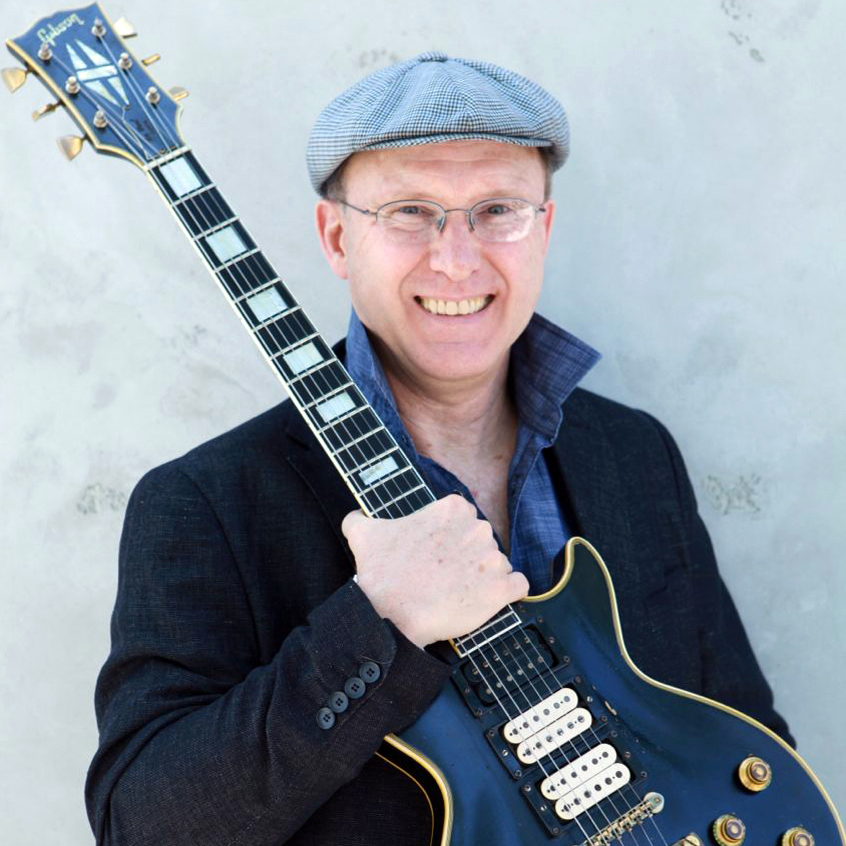
Barry Cleveland is a Los Angeles-based guitarist, recordist, composer, music journalist, and editor-in-chief of Model Citizens and The Lodge, as well as the author of Joe Meek’s Bold Techniques and a contributing author to Stompbox: 100 Pedals of the World’s Greatest Guitarists. Barry also served as an editor at Guitar Player magazine for 12 years and is currently the Marketing Communications Manager at Yamaha Guitar Group. barrycleveland.com
Related posts
Leave a Reply
You must be logged in to post a comment.
By submitting your details you are giving Yamaha Guitar Group informed consent to send you a video series on the Line 6 HX Stomp. We will only send you relevant information. We will never sell your information to any third parties. You can, of course, unsubscribe at any time. View our full privacy policy


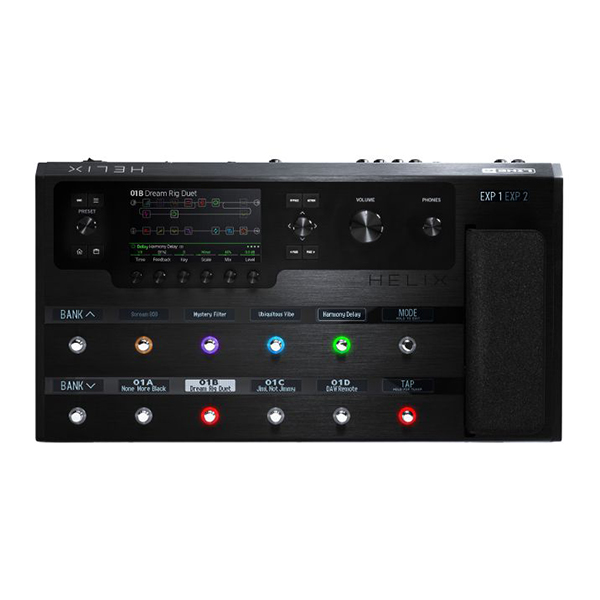

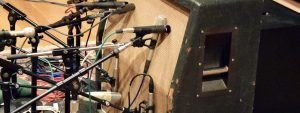

this is really good